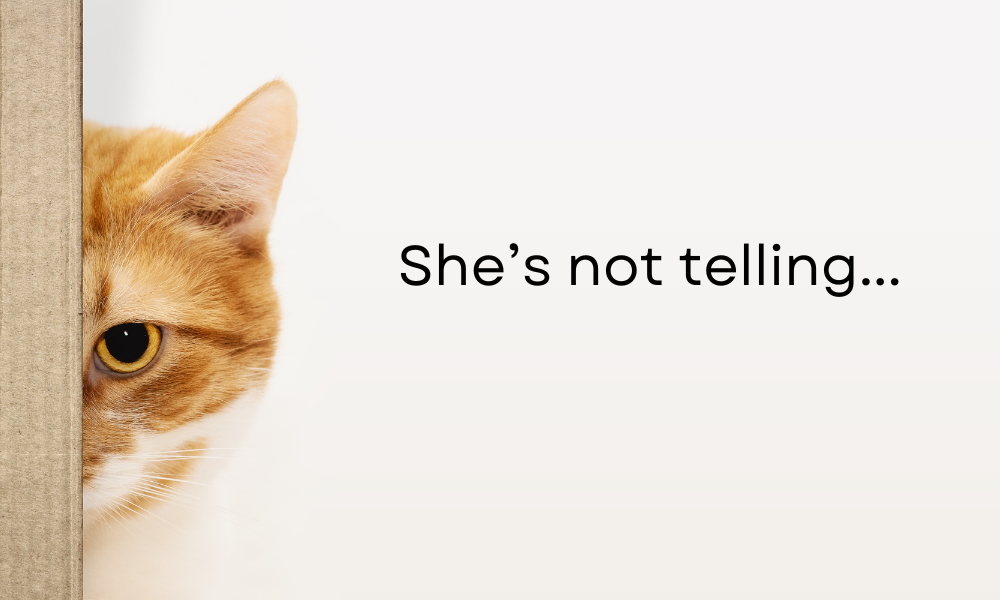
Why Is My Cat Breathing Heavy? Cat Breathing It’s Probably Not Normal! You come home and your cat is sitting on the couch . She’s alert but doesn’t respond to you.
You come home and your cat is sitting on the couch (or in the closet). She’s alert but doesn’t really respond to you. Her mouth is closed but there’s something that’s just not quite right. When you look closely, her nostrils are flaring and her belly is moving with more effort than you’re probably used to noticing. Your kitty is breathing heavily!
Most cats breathe between 10-30 times per minute at rest. This is called their resting respiratory rate. I tell my clients that sometimes it’s even hard to see a sleeping cat breathe. You have to watch their chest closely to see a very small rise and fall.
When you know what to look for, a cat’s heavy breathing will be easy to see. But sometimes respiratory issues are not so obvious!
Ever heard the term “ADR?” In the American South this stands for “Ain’t Doin’ Right.” Like the case I mentioned in the first paragraph, there’s something about your cat that’s not normal but you can’t quite place your finger on it.
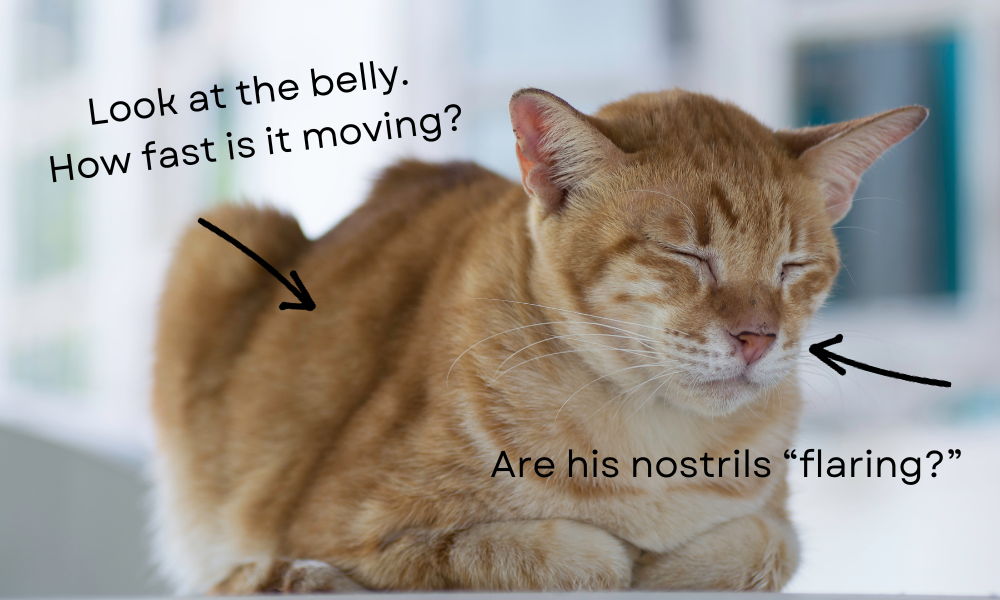
Panting or open-mouthed breathing and heavy breathing are not normal behavior in a cat and are often a sign of a serious medical issue.
*Fun Fact*
- Have you seen your cat smell something then hold his mouth open? Is he “sort of panting?” No! This is not panting, but what’s called the Flehmen Response and is how cats process various scents (especially pheromones) via their vomeronasal organ. It’s not panting. Yea!
Have YOU ever seen YOUR cat panting? Dogs pant all the time after exercise, right? Not cats. Regular panting is a big red flag that should encourage you to seek prompt veterinary care.
Exceptions exist in cats, especially kittens. For example, a cat may pant after a session of strenuous exercise or wild and crazy playtime. However, this should be short-lived and your cat should be normal within minutes of calming down.
Sometimes cats pant when stressed, such as during a car trip to the vet. Again, this should stop soon after arrival.
Any panting in a cat outside of these rare exceptions is concerning and potential causes should be considered.
Heavy breathing, with or without panting, is also a major cause of concern.
The veterinary term for heavy breathing is “dyspnea.” We also like to say “respiratory distress.”
Rapid or fast breathing, which may or may not be heavy, is called “tachypnea.” This is commonly seen as irregular, shallow breathing in cats.
If your cat is breathing heavily right now, stop reading and call your family veterinary hospital or seek emergency care at a local veterinary emergency hospital.
*Pro Tip*
- Taking a video of your cat breathing AT HOME can be really helpful for your veterinarian to see as cats often breathe faster in the veterinary hospital.
What are some causes of heavy breathing in cats?
Heavy breathing can be due to problems in the upper or lower respiratory tract. It can also be acute (meaning it came on suddenly) or chronic (it’s been going on for a while).
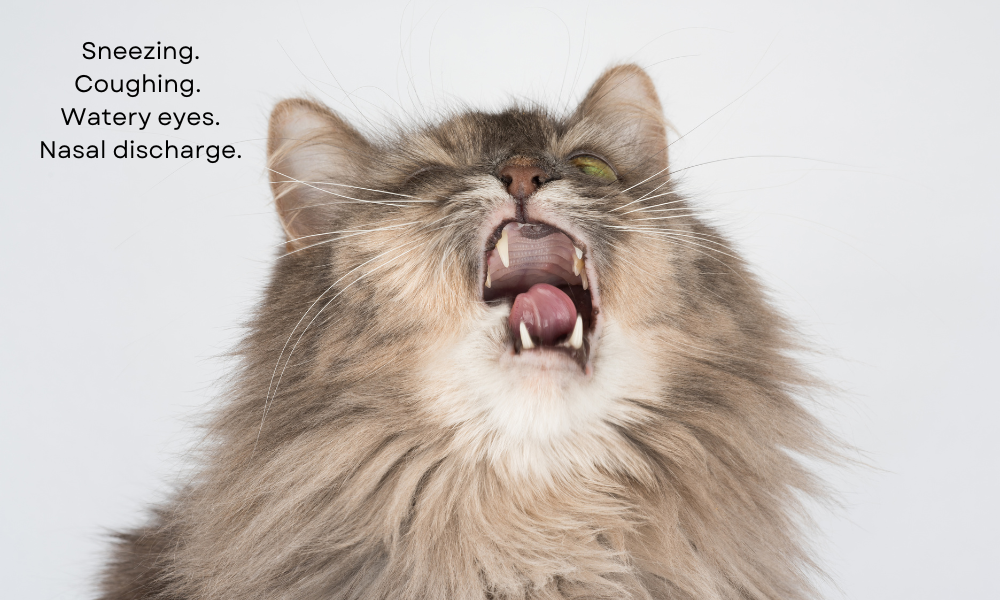
Upper Respiratory Infections (URI) – usually viral!
Signs of an upper respiratory infection include sneezing, nasal congestion or discharge and watery eyes. Sometimes the nasal passages get so congested that open mouth breathing ensues.
A URI is like a person having a cold. It’s usually due to infectious diseases such as one of a few viral infections (with the feline herpes virus being a common cause).
We all know it’s frustrating (but true) when we have a cold and our doctor says that we need “supportive care” and to “wait it out.” Well, the same goes for cats! A viral infection does not require antibiotics.
Keeping your cat hydrated and eating are key components of supportive care. Not being able to smell food can lead to a decreased appetite.
Your veterinarian might even recommend saline nose drops (which could be easy or a challenge, depending on your cat’s personality). Humidifiers, used with caution, can help to moisten nasal secretions.
Sometimes secondary bacterial infections do develop and antibiotics are indeed indicated. Pneumonia is a serious complication of a URI that can cause lower respiratory tract breathing difficulties.
There are other causes of upper respiratory distress such as foreign bodies (like grass stuck in the nasal passages), chronic upper respiratory infections that have progressed, fungal infections and even cancer. For the purpose of this article, we’re going to focus more on lower respiratory issues.
The most common lower respiratory causes of difficulty breathing:
Congestive Heart Failure (CHF)
Congestive heart failure is probably the #1 condition I see in feline–practice that causes respiratory distress. Oftentimes owners don’t even notice that there is a breathing problem. They may just say that their cat has stopped eating, is hiding or just seems “off.”
CHF occurs when a cat’s heart is not functioning properly. The heart is a pump that acts to move oxygenated blood through the blood vessels and out to the body, then back to the lungs (to pick up oxygen), then back to the heart to repeat the cycle.
When this pump starts to fail, an accumulation of fluid can build up either in the cat’s lungs (called pulmonary edema) or around the lungs (called pleural effusion). Most cases of heart failure in cats are categorized as left-sided. In the occasional right-sided cases, abdominal enlargement from fluid backup can also occur.
CHF is a life-threatening, emergency situation.
We treat CHF with oxygen therapy, sedation (to decrease the cat’s stress), various medications and removing the excess fluid. We then try to determine the underlying cause of the CHF with various diagnostic tests such as x-rays, blood work, blood pressure and an echocardiogram (an ultrasound of the heart).
There are other non-cardiac causes of fluid around the lungs and the cats can look exactly the same as a CHF cat! Ugh!
Cats can have other types of fluid such as blood (called hemothorax), chyle (which is lymph fluid and is called chylothorax) and pus (called pyothorax). Obtaining a sample of the fluid allows us to determine the cause.
Asthma
Asthma is also sometimes called chronic bronchitis. While technically the two conditions are different, many people group them into the same category.
Some of the other most common symptoms of asthma include panting, coughing, wheezing and a generally increased respiratory rate.
Cats with asthma may be diagnosed when they are stable and diagnosed because an astute owner reports the above signs, but they are otherwise “ok.” They may also be diagnosed during a major asthma “attack” that requires oxygen and other treatments such as steroids and bronchodilators.
Thankfully, most cases of asthma can be successfully treated long-term. Did you know that we even have inhalers for cats? Yes, many cats can be trained to use these! Our hospital cat Louie is currently in training to use the AeroKat inhaler device.
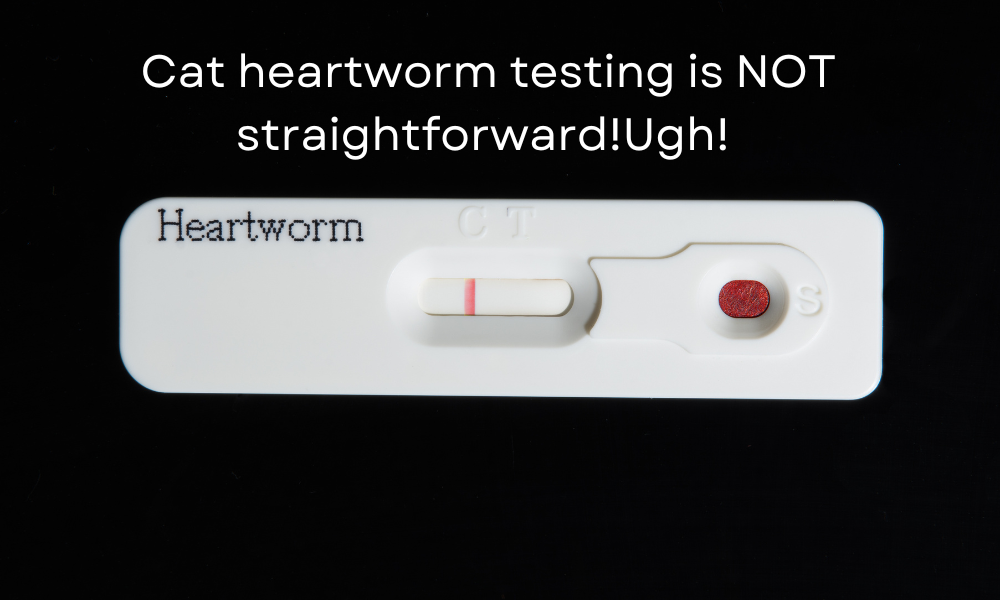
Heartworm Disease
Think cats don’t get heartworm disease? Think that INDOOR cats don’t get heartworm disease? Think again. Heartworms can be fatal in cats.
Heartworms are caused by mosquitoes. Unfortunately, many people still think of heartworm disease as a dog disease. While feline heart disease is different from the dog version, it’s definitely a problem and a cause of heavy breathing in cats.
Even in parts of the country where it gets really cold, heartworms can still be an issue. How? Because the temperature doesn’t stay cold enough for long enough in order to disrupt the heartworm-mosquito cycle.
Cats with heartworm disease look just like cats with asthma, sharing the same clinical signs! It can often be very difficult to differentiate the two conditions when a cat first comes in with breathing problems because we always want to minimize stress for any cat with respiratory problems.
Stress is not our friend and cats in respiratory distress can decompensate quickly when stressed.
Because of this, various diagnostic tests are often postponed until kitty is more stable.
Heartworms can also be a challenge to diagnose in cats. It’s not a straightforward yes/no like it can be in dogs.
Heartworms in cats cause a condition called Heartworm Associated Respiratory Disease (HARD), which causes chronic changes to the lungs. There is not a true “heartworm treatment” like there is in dogs. Treatment consists of supportive care with steroids and oxygen.
The good news with heartworm disease is that there are so many monthly heartworm preventative medication options that exist! My cats (and dog) get their prevention every single month.
What else could cause my cat to breathe heavily?
Trauma, airway obstruction, shock, pain and many other random causes could cause a cat to breathe abnormally. But nonetheless, abnormal breathing is always a cause of concern and warrants a consultation with your veterinarian.
Take a moment to go observe your cat’s breathing. Yes, right now. Go do it. What do you see?
Please note that the above is for informational purposes only and should not constitute medical advice. Develop a relationship with a feline-friendly veterinarian. Get to know them so that if you ever have questions about your cat’s condition you won’t hesitate to ask!
#catsfood #cats #cat #pets #catfood #catsofinstagram #petsfood #elite #life #dogsfood #catlovers #dogfood #dog #dogs #catfoods #catlover #petstore #catslovers #petstagram #petslovers #of #catstagram #catslife #catcare #beautiful #elitebeautifullife #roialcanin #doglovers #petsofinstagram #pet #doglover #petlovers #catsofinsta #catsofworld #instagram #catslover #gatos #catslove #onlinestore #shopping #petsshop #lovecats #petsfooddelivery #dogsofinstaworld #kittens #petsagram #food #meow #catlife #bahrain #petsoftheworld #petlover #petshop #onlineshopping #perros #catsfollowers #gatitos #catsinstagram #dogsofinstagram #comidaparagatos

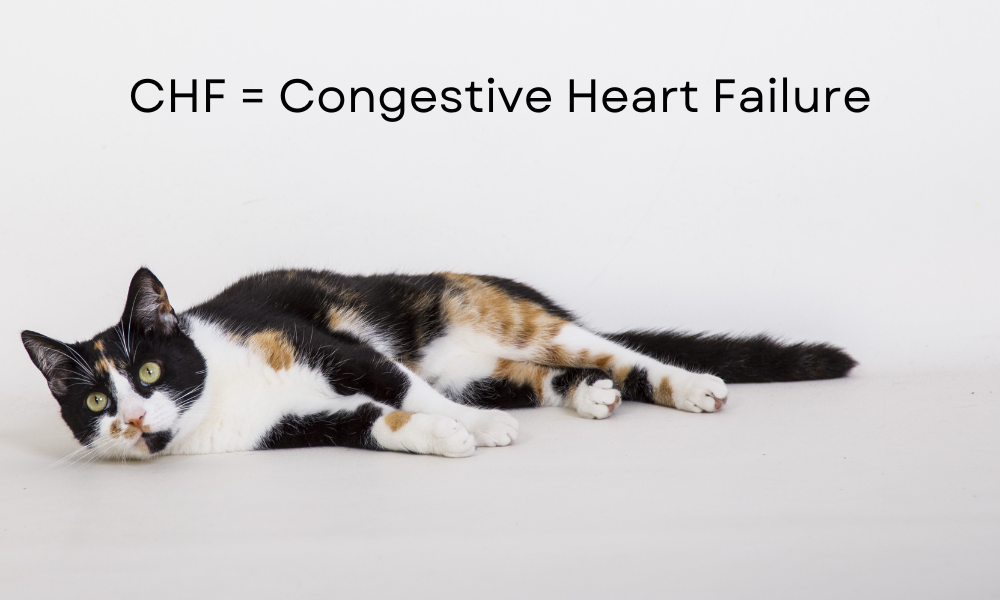
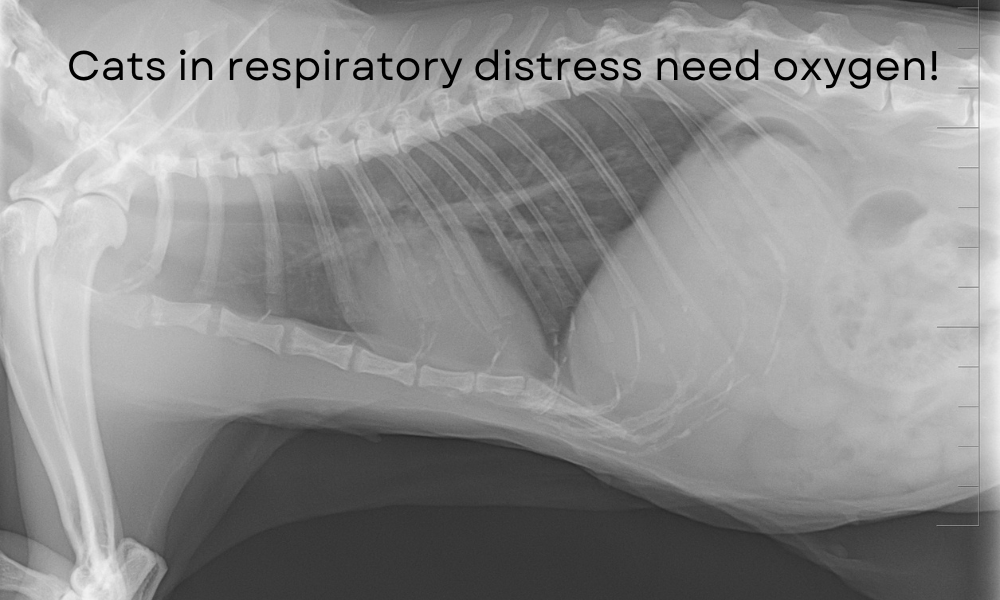
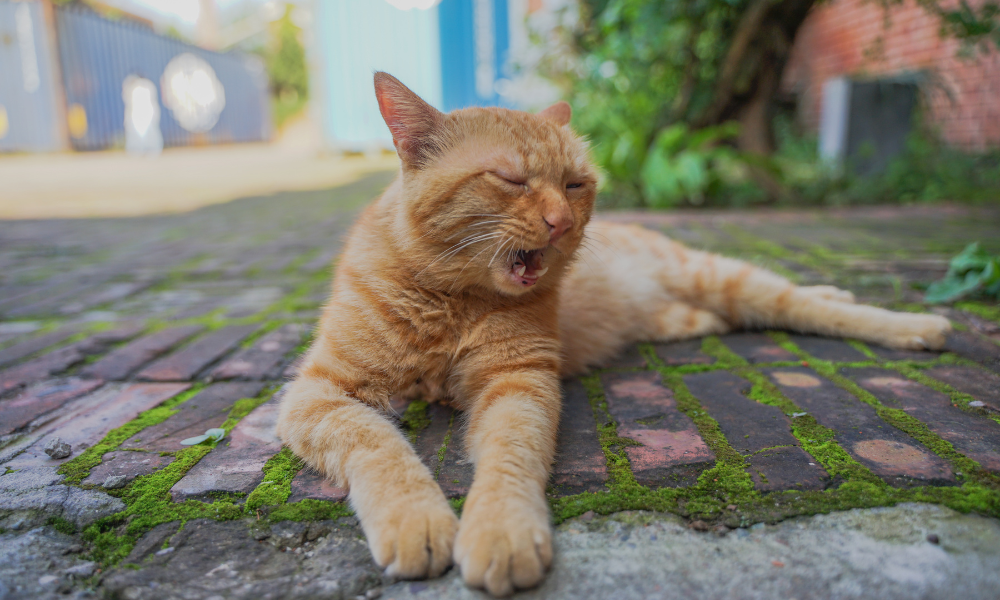
Leave a Comment
Your email address will not be published. Required fields are marked *